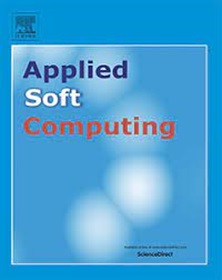Space-distributed machine learning based on climate lag effect: Dynamic prediction of tuberculosis
IF 7.2
1区 计算机科学
Q1 COMPUTER SCIENCE, ARTIFICIAL INTELLIGENCE
引用次数: 0
Abstract
An in-depth grasp of the complex relationship between climate and disease is crucial for fostering the development of public health security. However, certain limitations, such as overlooking spatial heterogeneity and lag effects, persist when revealing this complex relationship. With tuberculosis (TB) as a case, a pioneering space-distributed machine learning (SDML) framework is introduced to enhance TB prediction accuracy and unveil its complex relationship with climatic factors. Results demonstrate the nonlinear, intricate relationship between TB and climate variables, emphasizing the significant lag effect of climate variables on TB. Model comparisons demonstrate that SDML has a significant improvement in prediction, particularly in lag effect identification. The determination coefficient average of SDML (0.786) surpasses that of traditional machine learning (ML, 0.719). Utilizing an interpretable ML method to identify the impact of climate variables on TB, this study reveals evident spatial heterogeneity in the response of TB to climate. The spatial heterogeneity of the effects of extreme climate on TB suggests regionalized prevention and control strategies for diverse regions. This study provides a novel perspective on comprehending the intricate relationship between TB and climate, showcasing the feasibility of artificial intelligence-assisted scientific discovery.
求助全文
约1分钟内获得全文
求助全文
来源期刊

Applied Soft Computing
工程技术-计算机:跨学科应用
CiteScore
15.80
自引率
6.90%
发文量
874
审稿时长
10.9 months
期刊介绍:
Applied Soft Computing is an international journal promoting an integrated view of soft computing to solve real life problems.The focus is to publish the highest quality research in application and convergence of the areas of Fuzzy Logic, Neural Networks, Evolutionary Computing, Rough Sets and other similar techniques to address real world complexities.
Applied Soft Computing is a rolling publication: articles are published as soon as the editor-in-chief has accepted them. Therefore, the web site will continuously be updated with new articles and the publication time will be short.
 求助内容:
求助内容: 应助结果提醒方式:
应助结果提醒方式:


